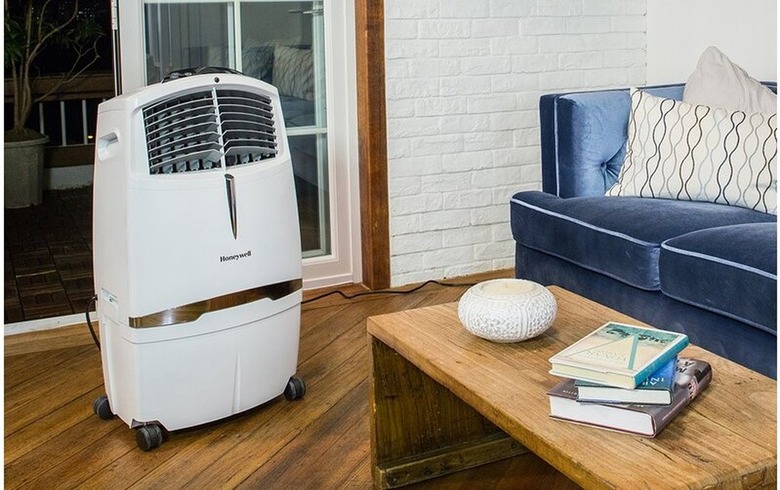How To Make A Swamp Cooler Throw Colder Air
We may receive a commission on purchases made from links.
A swamp cooler works by drawing outside air through pads saturated with water, allowing the water to evaporate and cool the air. It generally cools the air by 15 to 40 degrees depending on the conditions and how well your unit operates. Whether you have a permanent rooftop swamp cooler or a portable unit, little changes to the way you use it can help it throw colder air.
Use Cold Water
Use Cold Water
Your evaporative cooler relies on water to add a chill to the air, so adding ice to the mix seems like a logical solution to making the air colder. However, it doesn't help as much as you might think. The optimal temperature for water in a swamp cooler is around 50 degrees Fahrenheit, which is roughly the temperature your faucets produce from the cold tap. Ice doesn't drop the temperature significantly, and it can slow the cooling process.
When you add ice, it has to melt before it can produce colder air since it has to become water to evaporate. The ice might give you a little burst of extra-cold air as it melts, but it doesn't offer long-term colder air. The best option is to refill your swamp cooler with cold water.
Handle Routine Maintenance
Handle Routine Maintenance
Completing routine maintenance on your evaporative cooler keeps it running at optimal efficiency. This means it can produce cooler air and keep your house comfortable. Your swamp cooler isn't a closed system, which means it can get dirty or contaminated with bacteria. Change the water weekly and let the pad dry out completely to prevent mold. You can also use a 50/50 vinegar and water solution to saturate the pad as a disinfectant.
Replace the swamp cooler pad at the beginning of the cooling season. At the end of the season, drain the unit and clean it thoroughly with soap and water. Having your permanent swamp cooler serviced professionally each year ensures it's in good condition and helps you spot issues early when they're easier to repair.
Open Some Windows
Open Some Windows
With traditional air conditioning, keeping doors and windows closed helps it cool better. When you have a swamp cooler, you want windows open, at least a little. Opening the windows helps balance airflow, control humidity, and let hot air escape.
You usually only need to open the windows 1 or 2 inches, and you don't need to open every window in the house. Experiment with opening different windows and adjusting how much you open them. Signs that you might need to open the windows more include whistling, humming noises, or slamming doors. If you open them too much, it can make the house feel hotter. When you get the windows just right, your swamp cooler can produce cooler air.
Dehumidify the House
Dehumidify the House
Open windows should help keep the humidity under control, but sometimes, moisture can build up inside your home and make the system less efficient. Running a dehumidifier when the humidity levels inside your home increase can help the swamp cooler throw colder air. Moisture-loving plants, such as air plants, English ivy, aloe, and succulents, can also help control humidity inside your home.
Change the Position
Change the Position
For a portable swamp cooler, the positioning can affect how cool it makes you feel. The small, portable units are meant to cool just one room, similar to a window air conditioner, so don't expect it to cool your entire house. Position the unit so it's not blocked by furniture or other items that can trap the cool air and keep it from reaching you. Direct the fans on the swamp cooler toward seating so you feel the cool air on your skin while you're in the room.
